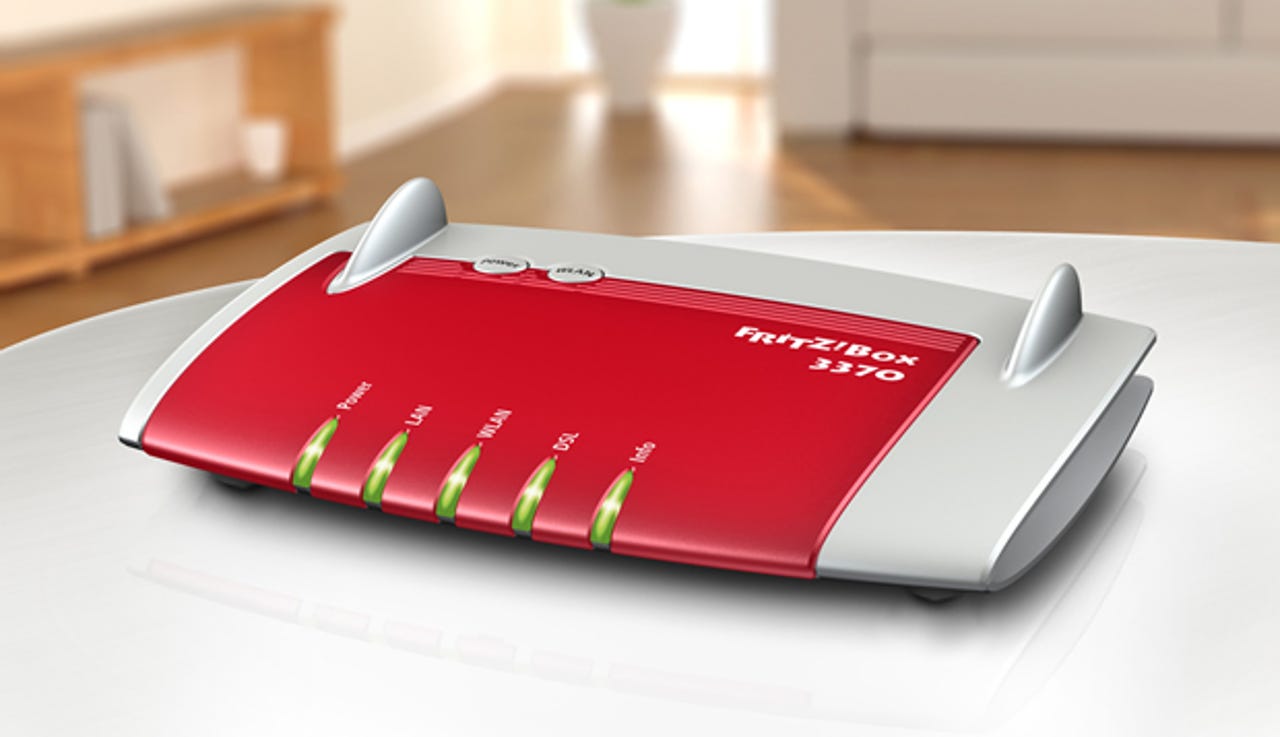AVM Fritz!Box 3370: First Take

AVM has been on a bit of a rampage this year, launching several new models in the Fritz!Box range of routers. Its latest offering, the Fritz!Box 3370, does away with all the physical telephony ports and DECT base station, but still has full SIP support that can be used with AVM's free Fritz!App FON app. This is available for iOS and Android devices. The Fritz!Box 3370 uses a 3x3 802.11n radio to give wireless link speeds up to 450Mbps, making it AVM's first three-stream model. It's a single-radio, dual-band model (using an Atheros AR9380 chip), so can only operate on one frequency at a time, but it supports 3-stream MIMO operation at both 2.4GHz and 5GHz.

The Fritz!Box 3370 uses the familiar low-profile chassis seen used in all the current models, but lacks the usual phone ports at the back. There's just the VDSL/ADSL connection, four Gigabit Ethernet ports and a USB 2.0 port (there's another at the side). The LAN ports support an automatic power-saving mode, but this simply reduces their speed to 100Mbps. As with all models, the ADSL modem can be disabled and one LAN port can be configured as a WAN port if needed.
It uses the latest Fritz!OS firmware, although the telephony features are hidden unless the Fritz!App support is enabled in the WLAN settings. It still has a DLNA media server and support for the free MyFritz remote management service. A 3G USB dongle can be connected to the USB port for automatic failover support for the primary WAN connection.
We ran our usual performance tests, using the latest version of Passmark Software's Performance Test and a 3x3 Intel 5300AGN adapter. At 2.4GHz it returned an average throughput of 34Mbps at 1m and 16Mbps at 25m, while on the 5GHz band it achieved 48Mbps at close range and just 14Mbps at 25m. These figures aren't particularly impressive for a 3-stream device, although the long-range results represent about a 50 percent improvement on the 2-stream Fritz!Box models we've seen, such as the 7330, 7360 and 7390.
The Fritz!Box 3370 — which costs £125 (ex. VAT), or €179 — will appeal to those who don't need to the analogue and DECT telephony features, but are attracted by the easy-to-use firmware and long lifecycle support of the Fritz!Box range. It's expensive compared to other similarly-featured routers, however.